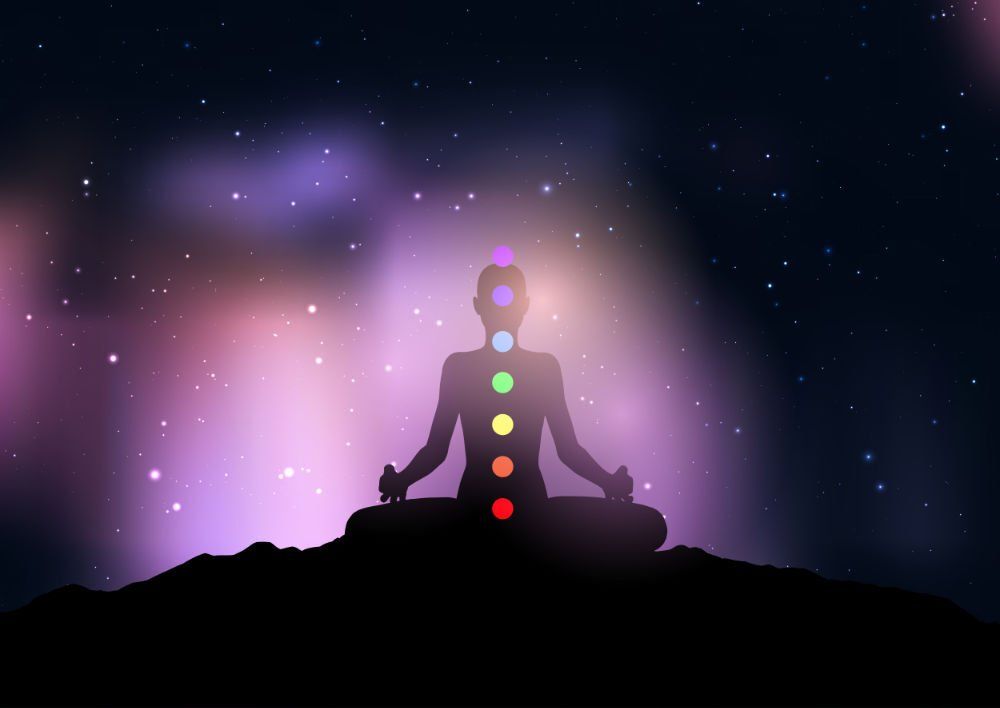Zazen and Energy (chakra energy)
I was a member of a traditional (Muslim) Sufi order in California for fifteen years. Sufism is the mysticism of Islam. Its goal is to open the heart so that it can receive the love of Allah. In traditional Sufi orders, there is a central ceremony performed weekly called “zikrullah” or “remembrance of God.” In the order I was in, this ceremony began with the men sitting on their knees in a circle, with the women standing in a line behind them, both swaying and chanting to the rhythm of “illahis” or Sufi hymns.

One of the chants had the words, “la illaha illallah,” meaning literally “”no gods, God,” or “there is only one God.” When the men chanted “la illaha” they would sway to the right and perform a half-circle movement from the base of the spine to the top of the head, and upon “illallah” they would complete the circle by moving their heads down energetically in the direction of the heart. In this manner they would move energy from the base of the spine to the heart. The aim was to loosen the muscular tension in the chest that made for emotional closure and blocked the love of God.
Although zazen is a more quiet activity, movement of energy also happens during it. With the repeated, momentary dropping of self that occurs when the meditator shifts attention from distracting thought back onto the breathing, energy moves up the spine.
The Indian chakra system may help to clarify this. In this system, the “chakras” are centers of bodily energy; the centers number seven in the simplest version of the system. They start with the “root chakra” at the base of the spine and move up to the “sacral chakra” in a position just below the naval, to the “solar plexus chakra” at the solar plexus, the “heart chakra” in the center of the chest, the “throat chakra” at the throat, the “third eye chakra” between the eyes, and finally the “crown chakra” at the top of the head. For chakra energy to become fixated especially in any of the lower centers can cause emotional and physical problems. Fixation in the root chakra, for example, may lead to insecure worry over money or personal acceptance; fixation in the solar plexus center may lead to a low sense of worth and lack of self-confidence. The aim in Indian healing is to balance chakra energy throughout the system.
Discussion of chakras is normally not part of Zen, but it does help to explain the movement of energy in a zazen practitioner as he continues to practice. Attending practice periods at longish intervals at the Zen monastery of Tassajara in California, I was able to observe the changes in some permanent resident students there. I remember a woman who was solitary and irritable the first time I saw her, but when I chatted with her at my next visit, she was light-hearted and cheerful. I also saw students who had gradually decided to become priests and teachers, who had no idea of doing that before. You might say that energy in the woman had become released from fixation in the root chakra, and that energy in the aspiring teachers had increased in the throat chakra.
Terminology aside, energy movement is what drives the changes in a continuing zazen practitioner. Practitioners increase gradually in self-acceptance, enjoyment in being alive, sensitivity to sensual experience, emotional availability, and so on. Some practitioners are aware of the movement of energy with them as they meditate; energy may stream at any place in the body, abdomen, chest, head. Awareness of such energy movement is not of any importance at all, and most practitioners are not aware of it. Energy inevitably takes its advancing course in a practitioner whether he is aware of it or not.